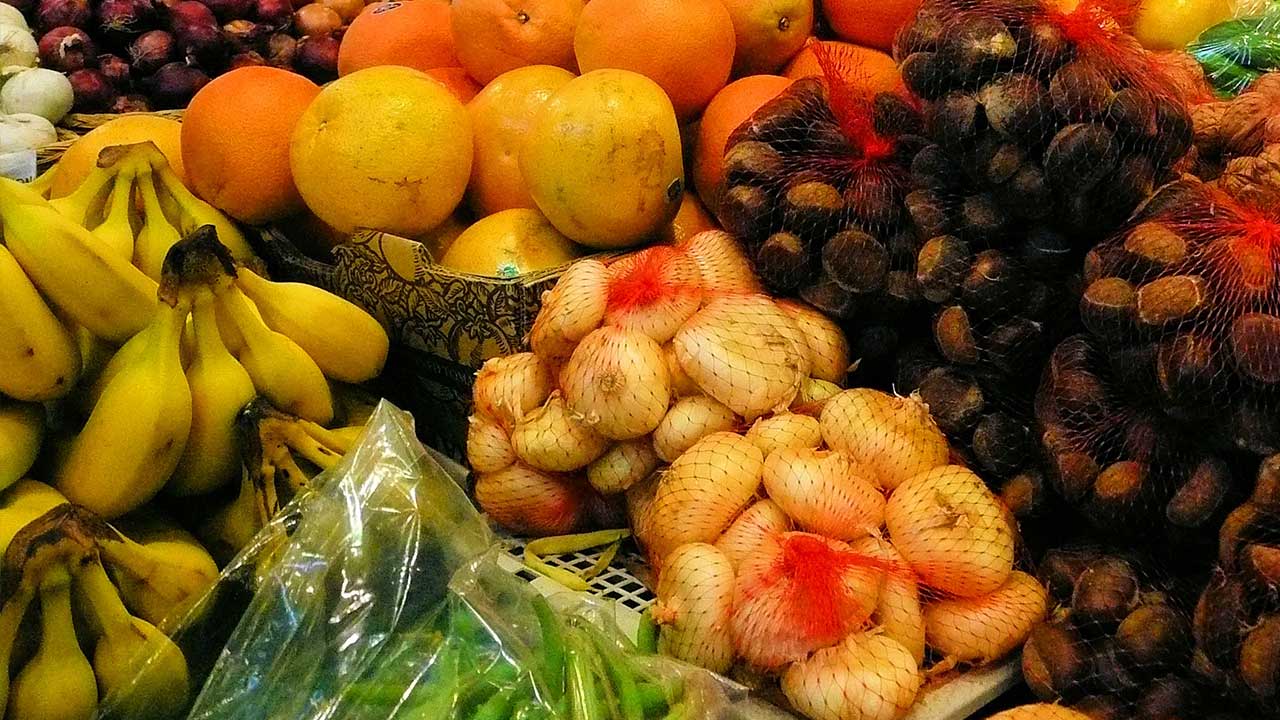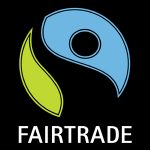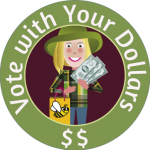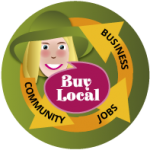Shopping wisely: a few tips for the new year and new you

By Linda Cornelius
ecogal Author and Designer
When I shop, I often make it known to shop owners if I would like to see a product on their shelves.
This way I inform them of my eco/green wishes and create a vision for them: by offering more desired goods, the customers would buy them. And I always hope that others also do this, so the shops are well informed, ’cause after all, how would they know if we aren’t choosy and tell them?

Non-GMO Project org is a source of information about GMO related issues
Similarly, I ask and crosscheck that certain foods are ‘non-GMO’ and I get the shop attendant to go and actually check if he is not sure about the answer. It’s important for me to know, but also for them to see that we – the buyers – don’t want these products and will go the extra mile to fully know what we buy.
One can do this with kindness and a helpful attitude, and actually make friends in the shop. They are not the enemy, they just want to earn their living like we all do.
Compare between different brands before committing. This way you can select the safer ones and put them on your ‘shopping list’ for the future. The time is spent only once in checking the labels. Every once in a while re-check though, as brands sometimes change their ingredients and unwanted additives can suddenly appear.
It’s good to be cautious when buying ‘sugar-free’, ‘fat-free’ or ‘diet’ products.
It’s often safer to just buy the natural equivalents: they have a greater ‘fullness’ factor, especially if whole and unprocessed, and if you eat less you’ll still save calories. Dieting is really a question of changing habits, or you’ll yo-yo up and down in weight anyway.
Sugar-free may contain Aspartame, fat-free may contain unsafe ingredients to re-create a flavor or quality, diet products most often contain sweeteners. Still: check the calories, are they really less?
For example, if you are looking for a ‘sweet’ product, be advised that molasses and syrups are just as calorie-filled as if it were sugar. The difference may be really minimal, if at all.
Also check yogurts and the various Probiotics: they may sound healthy enough, but are often filled with sugar, aspartame or other sweeteners, especially if fruit-based. Check the labels to find truly ‘white natural’ yogurts without sugar. You can at home add fresh fruits and make a smoothie, or add your own honey, maple syrup or whole sugar if you want to sweeten: honey, if organic and non-heated (which should be the standard for an organic anyway) at least give you health for your calories.
The same goes for ‘fat-free’ butter and margarine. Check out the labels. Margarine is not a good choice. If ever you want the butter, use less and enjoy the rich and satisfying flavor – especially if you can find grass-fed cow-milk organic butter. There are fat-reduced butters and replacements for you to find, just make sure that the excess fat isn’t replaced with unhealthy ingredients (hydrogenated fat, saturated fat and similar)
A great replacement for butter, if you are baking cakes for example, is to use a banana instead. I make great cakes this way: using just a tiny bit of butter and then a banana for the rest. If you want to go further, replace the called-for sugar with much less whole sugar, maple syrup or honey. Fruits can be made sweeter by adding a bit of fresh lemon juice, an Italian tradition that is tasty and smart. Or you may add a few drops of balsamic vinegar if you dare! As with so many things, you slowly get used to less and less fats and sugar. Just decrease the quantity a little every time you bake… You will end up with a great cake that is nutritious and healthy with fruits and eggs and lots of taste.

 When you are around, ask the food shops if they carry ‘organic’ and ‘Fair Trade’.
When you are around, ask the food shops if they carry ‘organic’ and ‘Fair Trade’.
They usually don’t. Make it known to them that there is a request to fulfill out there, they may start proposing healthier and ethical products.
Typical Fair Trade foods in stores are: cocoa and chocolate, coffee and tea, nuts, especially Brazilian nuts, cane-sugar, rice and various grains, beans, cookies, bananas and more. Ask your store to offer Fair Trade, it matters to enable everyone to survive well and get their children to school, get proper nutrition and be healthy. Fair Trade is a great way to ensure that what you buy is helping families live better in third world countries.
Best of all: many Fair Trade foods are now also certified organic, so check out for these too.

Fair Trade is not only ‘food’ – many products around are now both certified organic and Fair Trade, for example cotton T-shirts. Make your wallet count. Demand better and ethically correct products in the shops. A thumb-rule I go with is: if it’s too cheap, someone else is paying… and it may even be you, if the quality is too poor!
It may be sweat factories, children labor, underpaid peasants, even illegal products: someone is paying for your super-savings. There’s nothing wrong in looking for a good deal, just be wary of things that do not add up and sound too good to be true.
Some beginning links to check out further:
- A great print-out to have with you when shopping: Whole Foods list of unacceptable ingredients in food
- Visit Non-GMO project org for lot’s of information on GMOs
- FairTradeUSA.org for more information on all the types of products offered.
- Find out more about margarine at The Real Food Guide com
Here is an app to have on your phone while you shop, it’s free: Buycott.com – Scan a barcode with the Buycott app and it will look it up in its database and try to determine who owns it. Buycott will then trace the product’s ownership back to its top parent company and cross-check this company against the campaigns that you’ve joined before telling you whether it found a conflict.
Another free app gives you more information on the actual products and ingredients: GoodGuide.com
Read also our articles on:
Oh, Sugar, Oh… – Processed foods ingredients we have in our pantries are far from being nutritious.
Sugar, the Bitter Truth – Fructose consumption (as both high fructose corn syrup and sucrose) has increased coincidentally with the worldwide epidemics of obesity and metabolic syndrome.
If you are in doubt, internet is a good place to find out more
Check out ingredients that you are not sure of online, and decide if you want to continue buying the product.
Being informed is not only helping your health, but also actively changing the world we live in, choice after choice.

You are giving smaller producers the possibility to grow by demanding healthier, ethical products. You are driving the good products into the shops by making it interesting for shop-owners to propose them. Every dollar spent is actually a political statement, and a very peaceful one at that! Make it known that you care about what you eat and buy and that you want the best and healthiest.
Whenever possible, prefer original products to fake imitations. I see fake French and Italian cheeses and pasta, tomato sauces and more, around: why not support the brands that offer the real product, often based on hundreds of years of great tradition? Good food is based on good quality raw ingredients, and quality products last longer and are cheaper in the long run.
And a last little tip is: before you buy, think again, do you really need it?
Not buying is good for your wallet! And this way you can concentrate in quality versus quantity, and better afford durable and useful things that make your life better. If you really just feel hungry for just ‘something’ it might be an emptiness that would be better cared for with a walk in the park with your child or pet, or anyone you love…
For a better, healthier 2015!
